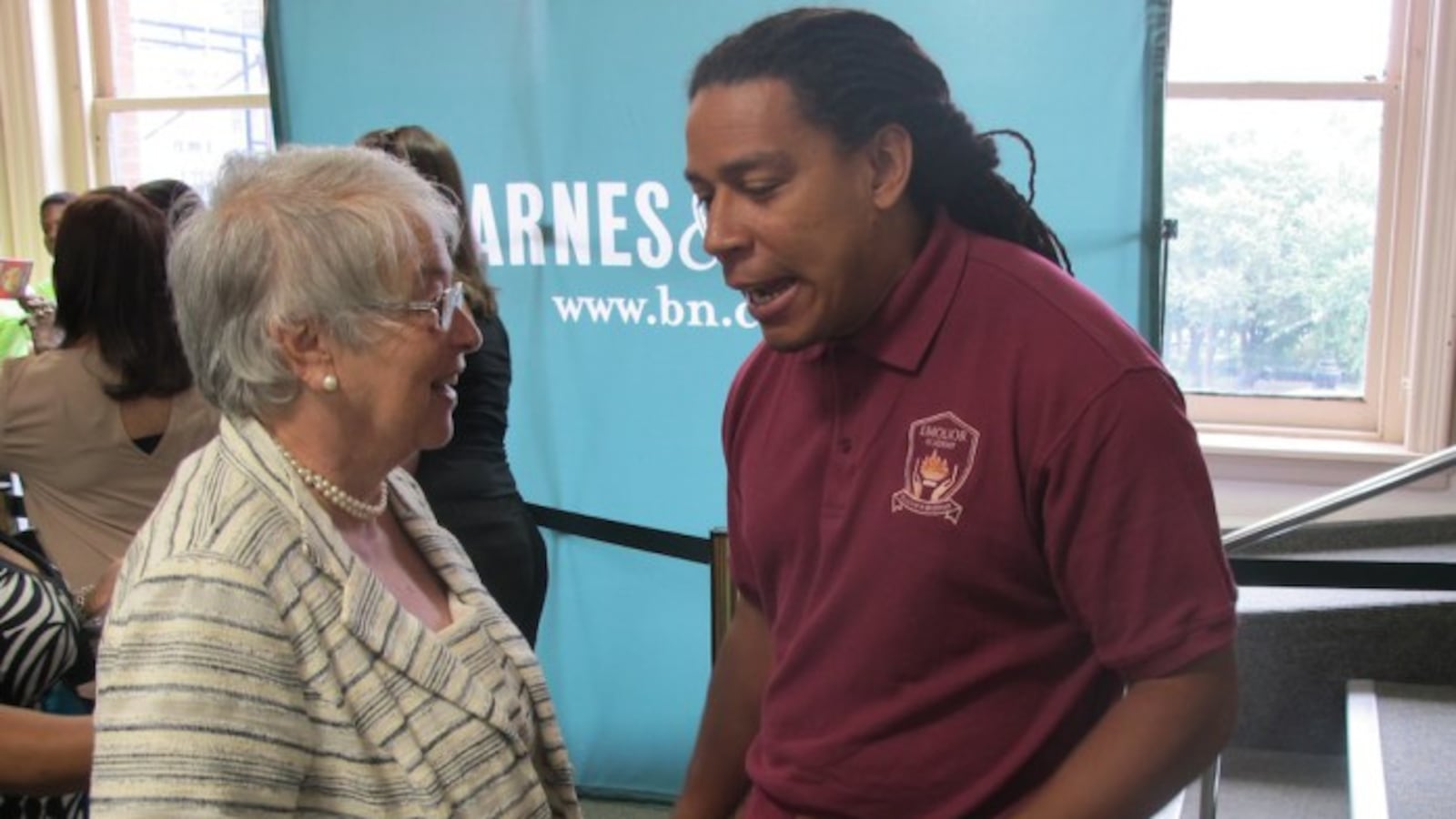Sarita Parrales didn’t read at all last summer. And when it came time to start seventh grade, she remembered having to scramble.
“I felt like I was behind the whole class,” said Parrales, who will enter eighth grade at Emolior Academy, a public middle school in the South Bronx, this fall. “Then around like December or November, I was starting to catch up.”
Parrales described the setback this week at a Union Square bookstore, where she declared that this summer had been different: she had read a book from the Diary of a Wimpy Kid series, the childhood memoir of the writer Walter Dean Myers, and four others.
The difference this summer was a growing pilot program that sends New York City students home for the summer with iPads loaded with a digital library and software that tracks their reading. The program, now in its second year, is one of a number of ways the city is continuing to tackle a perennial problem: The fact that low-income students fall further behind than their peers from affluent families over summer break.
Nine weeks off from school are replaced with books from home or structured summer programs for some children, but for many others the break means going months without having anything to read — which can lead to a phenomenon known as “summer slide.”
“It’s very real,” said Sam Dorrance, a teacher at Emolior Academy. “And a lot of times, if they continue doing that year after year, reading doesn’t seem like something you get better at. It ends up appearing as though it’s just not something that’s for you.”
Emolior Academy was one of 18 schools and three community-based organizations that participated in the iPad-based program, called SummerSail, provided by the company LightSail. (CEO Gideon Stein is also on Chalkbeat’s board.) About 400 students received tablets loaded with novels, nonfiction books, poems, and articles tailored to their reading levels and were tasked with reading for four hours a week.
Students then met with teachers like Derrance every Monday for about four hours. He required them to write at least one “digital sticky note” about the book they were reading, asking a question or offering a summary or review.
It’s a structure that makes sure students have things to read that make sense to them, said Yolanda Rice, a reading coach at M.S. 385 in Brooklyn. Even for students who do have access to books at home, what’s available “might be too high or too low, or just the library that they have in their home is not diverse enough,” she said.
Sarah Pitcock, CEO of the National Learning Association, said programs like SummerSail and lower-tech book distributions can’t be expected to help students close big gaps in their reading skills. But they can maintain skills as students progress to the next grade level.
“The lowest-income students lose two to three months of their reading skills,” Pitcock said. “To have that evaporate over the course of the summer is huge.”
The pilot program has been available to schools in the city’s Middle School Quality Initiative, which aims to bring high-needs students up to grade level in reading and writing. Since 2012, initiative has provided schools with funds to lengthen the day, add tutors, train teachers, and buy books. (MSQI will grow to 108 schools, from 87, next year, the city announced Wednesday.)
Whether SummerSail specifically will help students hold onto those skills isn’t yet clear. The city has not completed an analysis of the program, and LightSail is working with Johns Hopkins University to conduct a study that will compare participants’ skills in June and September of this year to those of a control group of similar students.
Parrales, for one, said she still preferred reading “real” books. Her tablet required Internet access and did not have enough of a selection of anime, her favorite genre.
But she said she knew through experience that students who “don’t really read over the summer fall behind when they come back from school.”
“That’s why I’m here,” she said.

